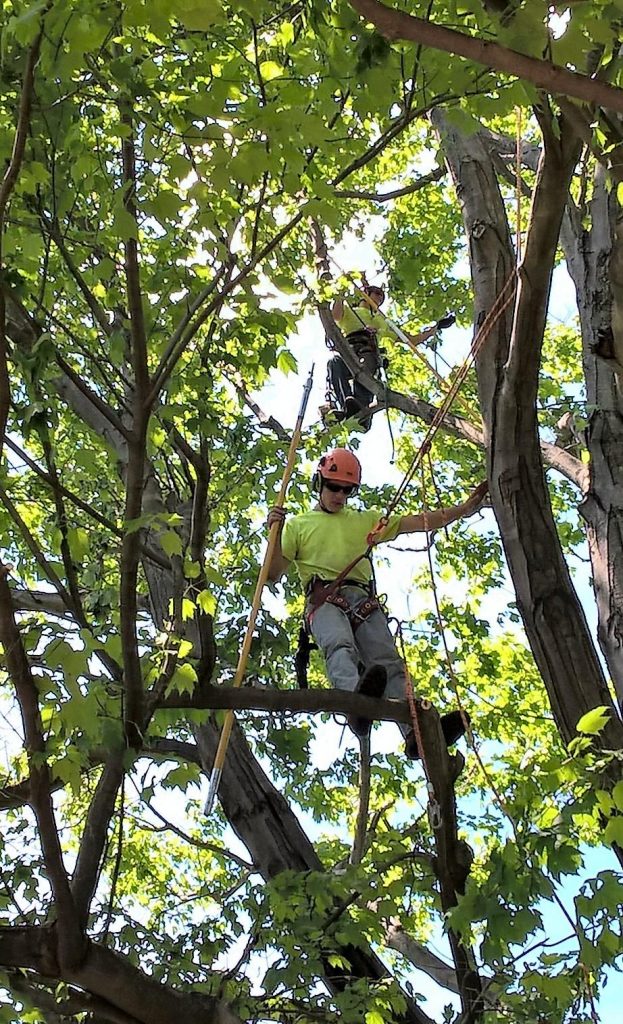Tree Trimming and Maintenance
 The reason we hear most often for wanting a tree trimmed is “my tree is too big, can you make it smaller?” In most cases, this is an unrealistic request with regards to the trees health and structural well-being. A trees size is determined by the species of tree and its environment. A mature pin oak tree growing in an area with ample sunlight, water, and ample root zone with good soil can grow in excess of 80 feet tall. A crimson king maple may only reach half that size. It would be unrealistic to keep the pin oak the same size as the maple.
The reason we hear most often for wanting a tree trimmed is “my tree is too big, can you make it smaller?” In most cases, this is an unrealistic request with regards to the trees health and structural well-being. A trees size is determined by the species of tree and its environment. A mature pin oak tree growing in an area with ample sunlight, water, and ample root zone with good soil can grow in excess of 80 feet tall. A crimson king maple may only reach half that size. It would be unrealistic to keep the pin oak the same size as the maple.
So if trimming cannot keep your tree smaller, why trim then?
There are many benefits to a regular trimming program:
1. Cleaning out the crown of your trees will remove dead, decayed, and/or diseased limbs from the tree to prevent these limbs from falling unexpectedly. Removal of diseased limbs may help prevent the spread of the disease throughout the rest of the tree.
2. Thinning the crown of your trees can eliminate excess growth and thickness of the crown. This is important because and over thick crown can prevent air flow through the tree. A lack of air flow will prevent moisture from evaporating from the leaves thus creating an ideal breeding ground for fungal diseases.
3. Structural Pruning is often called for in younger trees. Structural pruning is the selective removal of limbs to promote proper branch structure. A tree that is properly pruned from an early age develops limbs that are stronger and more structurally sound. Well maintained trees are also much easier to maintain as they mature.
4. Clearance Trimming is called for when limbs are encroaching on houses, utility lines, or other structures. The term “side trimming” is used when trimming limbs from one side of a tree for clearance of a structure.
5. Crown Reduction (not to be confused with “Topping”) should be performed when excessive limb weight threatens a trees structure. This type of trimming should only be performed on certain types of trees, usually softer wood trees. Crown reduction of mature trees should be prescribed and performed very carefully by a trained arborist. Topping is an extreme form of crown reduction that involves removing a significant portion of the crown. This is usually done to “shorten” a tree. However, removal of a large portion of the trees crown has many adverse effects on the trees health and structure and should be avoided.
6. Restoration Pruning may beprescribed to help fix problem trees that have been damaged by storms or improper trimming techniques. Depending on the severity of damage, restorations may take several trimming sessions to complete.
7. Cabling and Bracing can be done to multi-leader trees to prevent failure.Cabling is the process of installing bolts into the limbs connected with a cable to hold limbs in place to helps reduce stresses caused at weak branch unions such as co dominant leaders. In more extreme cases, the cable should be accompanied by a Brace which is a solid bolt installed at the branch union. Braces should never be installed without a cabling first. Cables can however be installed without bracing the branch union.
